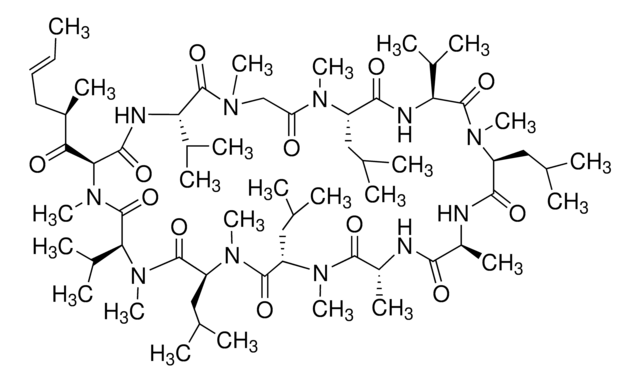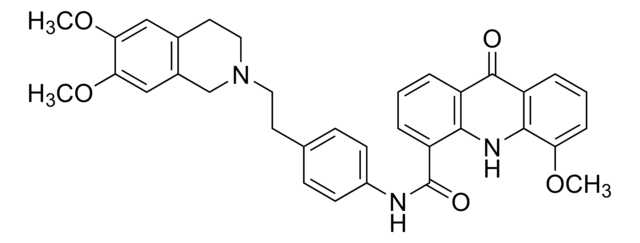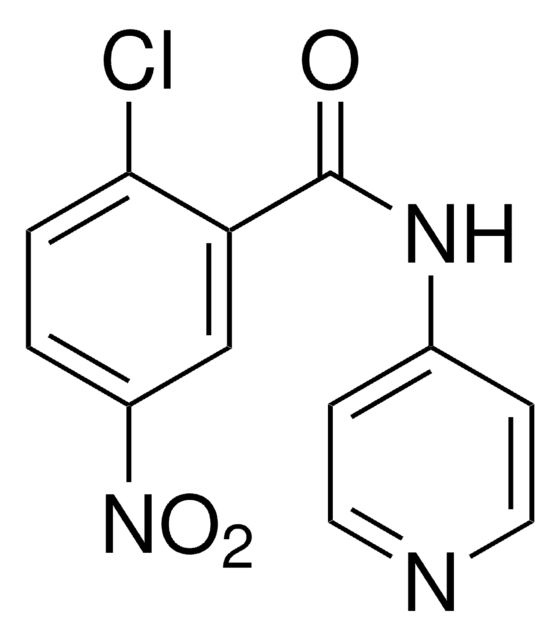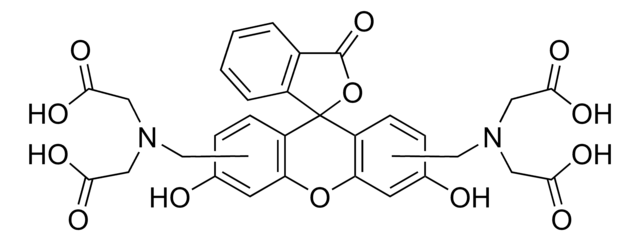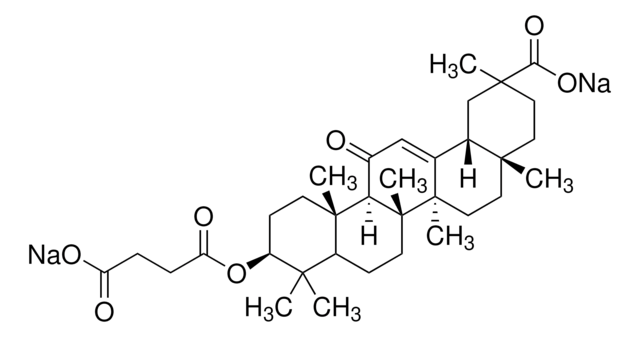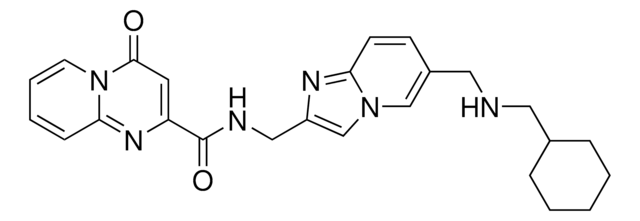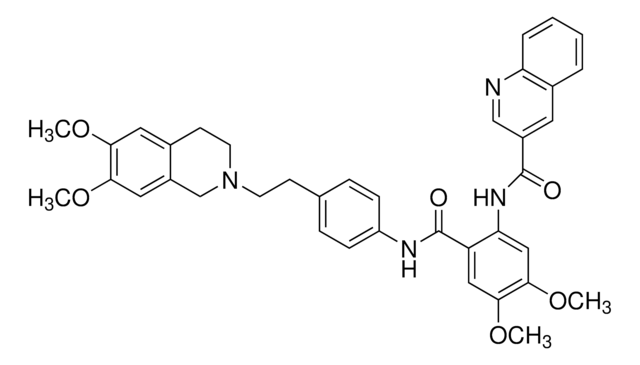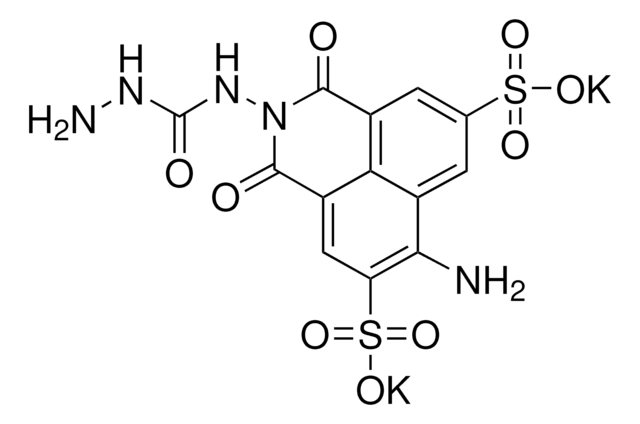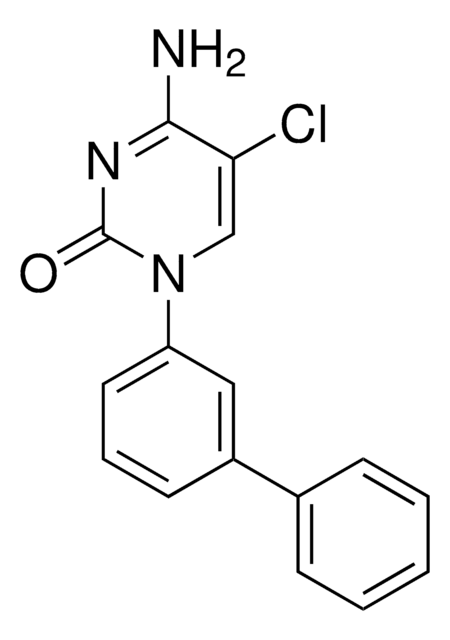Recommended Products
biological source
rabbit
Quality Level
antibody form
purified antibody
antibody product type
primary antibodies
mol wt
calculated mol wt 15.4 kDa
observed mol wt ~17 kDa
purified by
affinity chromatography
species reactivity
human, mouse
packaging
antibody small pack of 100 μL
technique(s)
ChIP: suitable
dot blot: suitable
immunofluorescence: suitable
western blot: suitable
isotype
IgG
epitope sequence
N-terminal half
Protein ID accession no.
UniProt accession no.
storage temp.
2-8°C
Specificity
This rabbit polyclonal antibody specifically detects Histone H3 with butyrlated lysine 27.
Immunogen
KLH-conjugated linear peptide corresponding to 10 amino acids surrounding butyrlated lysine 27 of human Histone H3.
Application
Quality Control Testing
Evaluated by Western Blotting in lysates from HCT-116 cells treated with 5 mM Sodium butyrate.
Western Blotting Analysis: A 1:1,000 dilution of this antibody detected Histone H3 butyrlated on lysine 27 in lysate from HCT-116 cells treated with 5 mM Sodium butyrate.
Tested Applications
Immunofluorescence Analysis: A 1:500 dilution from a representative lot detected Histone H3K27butyrl in Mouse cecal sections (Data courtesy of Dr. Leah Gates, Dave Allis Lab @ Rockefeller University, New York).
Chromatin Immunoprecipitation (ChIP) Analysis: 10 µg from a representative lot detected Histone H3K27butyrl in HCT-116 cells (Data courtesy of Dr. Leah Gates, Dave Allis Lab @ Rockefeller University, New York).
Dot Blot: A 1:2,000 dilution from a representative lot detected Histone H3K27butyrl peptide (Data courtesy of Dr. Leah Gates, Dave Allis Lab @ Rockefeller University, New York).
Note: Actual optimal working dilutions must be determined by end user as specimens, and experimental conditions may vary with the end user.
Evaluated by Western Blotting in lysates from HCT-116 cells treated with 5 mM Sodium butyrate.
Western Blotting Analysis: A 1:1,000 dilution of this antibody detected Histone H3 butyrlated on lysine 27 in lysate from HCT-116 cells treated with 5 mM Sodium butyrate.
Tested Applications
Immunofluorescence Analysis: A 1:500 dilution from a representative lot detected Histone H3K27butyrl in Mouse cecal sections (Data courtesy of Dr. Leah Gates, Dave Allis Lab @ Rockefeller University, New York).
Chromatin Immunoprecipitation (ChIP) Analysis: 10 µg from a representative lot detected Histone H3K27butyrl in HCT-116 cells (Data courtesy of Dr. Leah Gates, Dave Allis Lab @ Rockefeller University, New York).
Dot Blot: A 1:2,000 dilution from a representative lot detected Histone H3K27butyrl peptide (Data courtesy of Dr. Leah Gates, Dave Allis Lab @ Rockefeller University, New York).
Note: Actual optimal working dilutions must be determined by end user as specimens, and experimental conditions may vary with the end user.
Target description
Histone H3 (UniProt: P68431; also known as Histone H3/a, Histone H3/b, Histone H3/c, Histone H3/d, Histone H3/f, Histone H3/h, Histone H3/I, Histone H3/j, Histone H3/k, Histone H3/l) is encoded by the HIST1H3A (also known as H3FA, HIST1H3B, H3FL, HIST1H3C, H3FC, HIST1H3D, H3FB, HISTH3F, H3FD, HIST1H3F, H3FI, HIST1H3G, H3FH, HIST1H3H, H3FK, HIST1H3I, H3FF, HIST1H3J, H3FJ) gene (Gene ID: 8350, 8351, 8352, 8354, 8355, 8356, 8357, 8358, 8968) in human. Histones and DNA assemble to form nucleosomes and each nucleosome organizes a stretch of DNA wrapped around a histone octamer that is composed of a central (H3-H4)2 tetramer, flanked by two H2A-H2B dimers. A large number of variants of Histone H3 have been described in mammals. The two main variants, H3.1 and H3.3, show different genomic localization patterns in animals. They possess distinct histone chaperones, CAF-1 and HIRA, which play important role in mediating DNA-synthesis-dependent and -independent nucleosome assembly. Histone H3.1 serves as the canonical histone, which is incorporated during DNA replication, whereas H3.3 acts as the replacement histone that can be incorporated outside of S-phase during chromatin-disrupting processes like transcription. Histone H3 features a main globular domain and a long N-terminal tail, which protrudes from the globular nucleosome core and can undergo several different types of epigenetic modifications that influence cellular processes. The amino-terminal tails of histone proteins are subject to several posttranslational modifications, including acetylation, methylation, and phosphorylation, which recruit downstream regulatory factors, influence chromatin structure, and are critical determinants of transcription. These modifications on histones, known as histone acyl marks, are involved in transcription regulation. However, the exact role of other modifications, such as propionylation and butyrlation are still under investigation. These modifications are detected at comparable levels to acetylation on selected residues in histone H3. Butyrlation of lysine 9 in histone H3 that occurs in cecal epithelial cells is shown to shown to decrease upon antibiotic treatment. This diminution can be rescued by treatment with exogenous tributyrin. (Ref.: Scott, WA., and Campos, EI. (2020). Front. Cell Dev. Biol. 8; 701; Allis CD., and Jenuwein, T. (20160. Nat. Rev. Genet. 17(8); 487-500).
Physical form
Purified rabbit polyclonal antibody in buffer containing 0.1 M Tris-Glycine (pH 7.4), 150 mM NaCl with 0.05% sodium azide.
Reconstitution
0.5 mg/mL. Please refer to guidance on suggested starting dilutions and/or titers per application and sample type.
Storage and Stability
Recommended storage: +2°C to +8°C.
Other Notes
Concentration: Please refer to the Certificate of Analysis for the lot-specific concentration.
Disclaimer
Unless otherwise stated in our catalog or other company documentation accompanying the product(s), our products are intended for research use only and are not to be used for any other purpose, which includes but is not limited to, unauthorized commercial uses, in vitro diagnostic uses, ex vivo or in vivo therapeutic uses or any type of consumption or application to humans or animals.
WGK
WGK 1
Flash Point(F)
Not applicable
Flash Point(C)
Not applicable
Regulatory Information
新产品
Certificates of Analysis (COA)
Search for Certificates of Analysis (COA) by entering the products Lot/Batch Number. Lot and Batch Numbers can be found on a product’s label following the words ‘Lot’ or ‘Batch’.
Already Own This Product?
Find documentation for the products that you have recently purchased in the Document Library.
Our team of scientists has experience in all areas of research including Life Science, Material Science, Chemical Synthesis, Chromatography, Analytical and many others.
Contact Technical Service